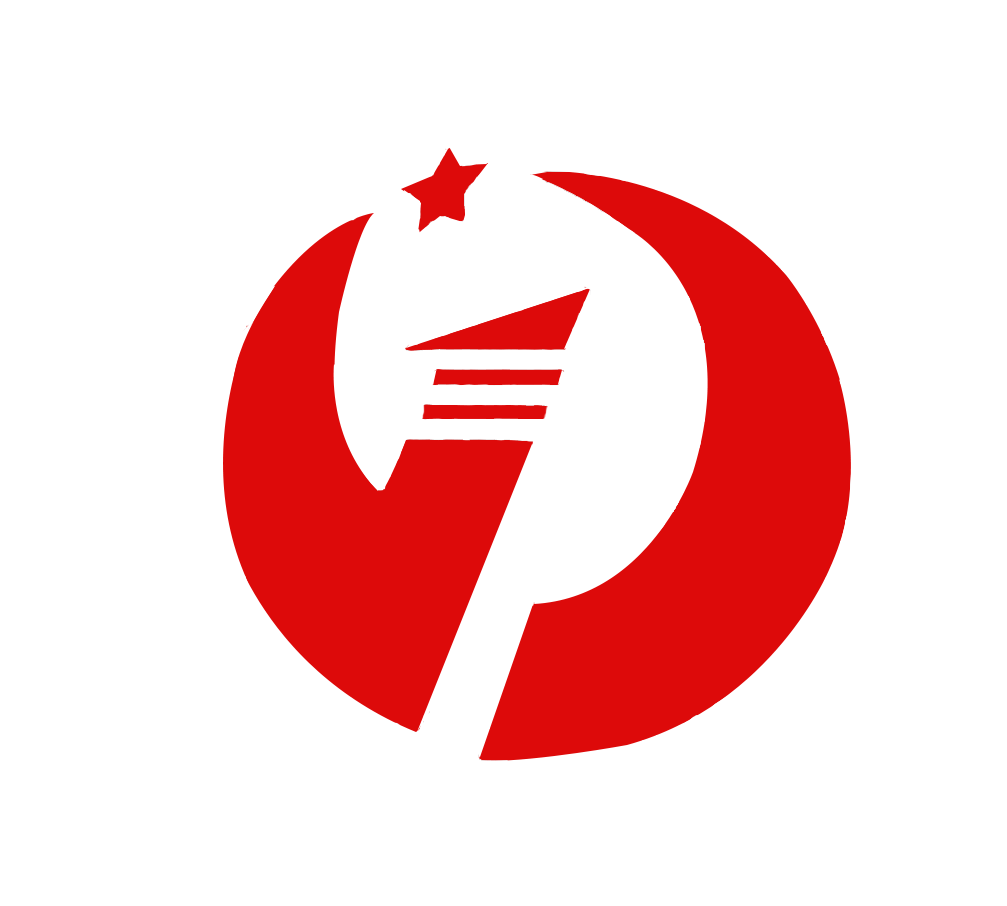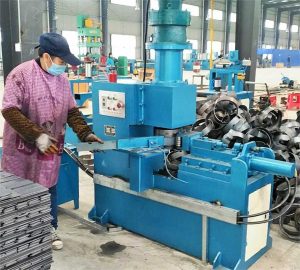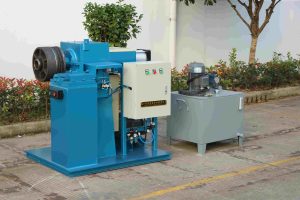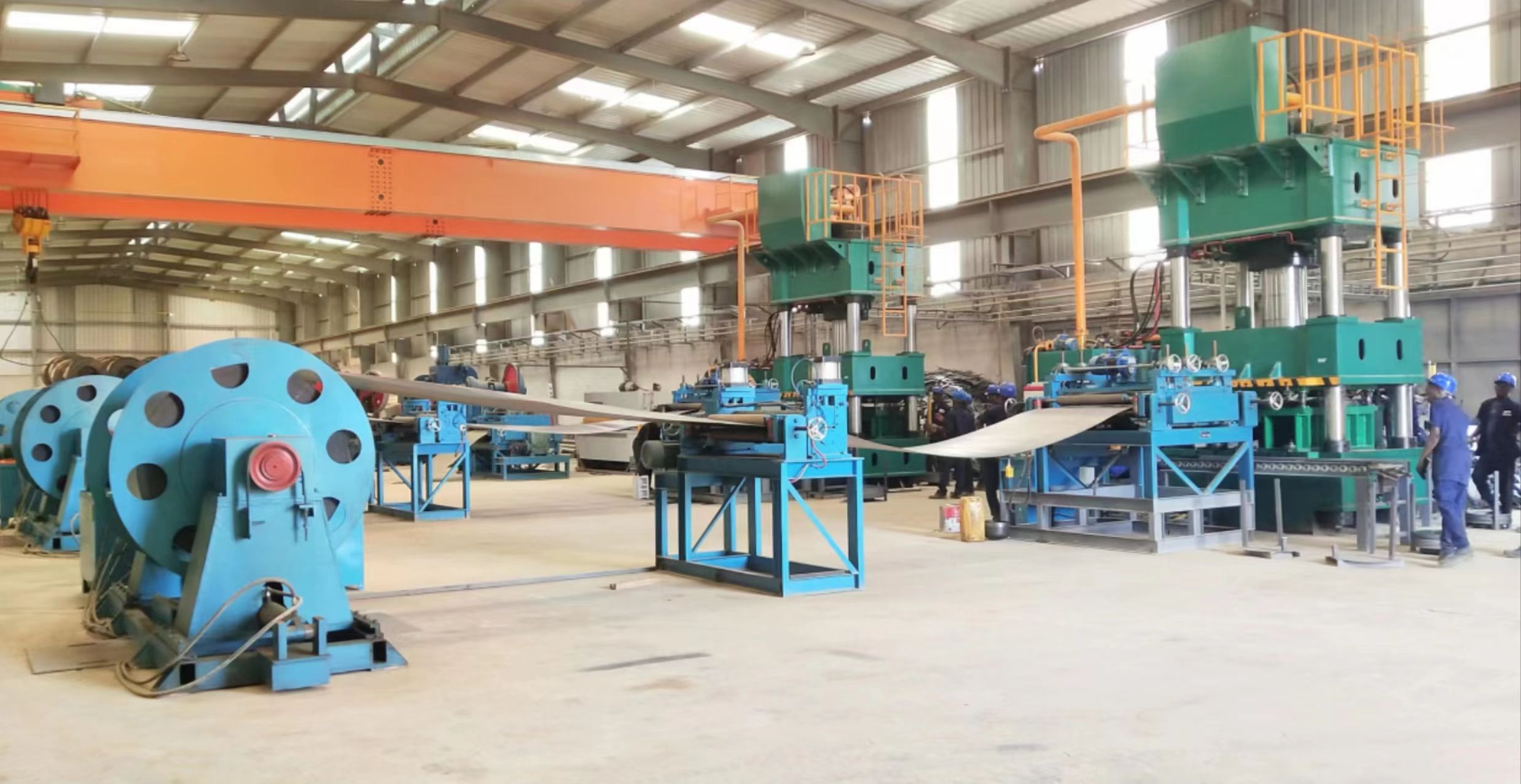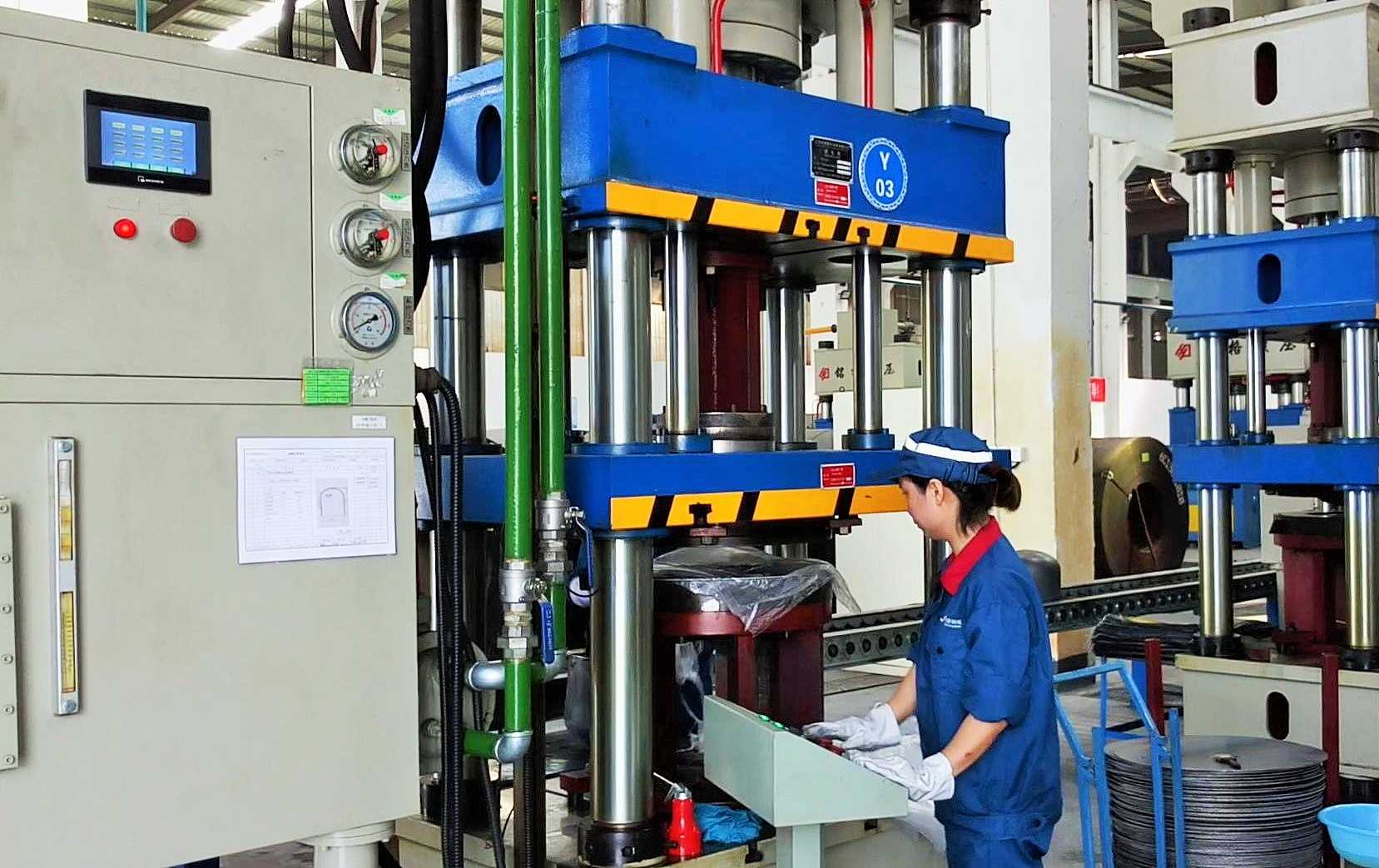- Equipment Overview
The two-roll/four-roll circular forming machine for LPG cylinder bodies (hereinafter referred to as the “circular forming machine”) is a key specialized equipment specifically designed for manufacturing LPG cylinder bodies. Its function is to transform the pre-cut and pre-bent rectangular steel plates into an accurate cylindrical shape through plastic deformation. This equipment is a core component of the LPG cylinder production line, and its circular forming quality directly affects the roundness, straightness of the cylinder, and the quality of subsequent welding processes.
- Core Principle:
- Upper Roll (Rigid Die Roll): A high-precision steel mold with an outer diameter exactly matching the inner diameter of the target LPG cylinder body.
- Lower Roll (Elastic Roll): Usually made of high-performance elastic materials such as polyurethane.
- Working Process: The hydraulic system drives the upper roll to forcefully press down, squeezing the steel plate and the elastic lower roll beneath it. The elastic lower roll deforms under pressure to form a “wrapping angle”. As the upper roll rotates, it uses huge frictional force to drive the steel plate, forcing it to completely wrap and adhere to the surface of the rigid die roll, thus forming an accurate cylinder consistent with the die roll in one step.
- Main Structural Components
3.1. Frame: A heavy-duty steel plate welded structure that has undergone stress relief treatment, featuring extremely high rigidity and strength to withstand the huge circular forming pressure.
3.2. Roll Shaft System:
- Upper Roll (Die Roll): The core working component. Made of high-strength alloy steel, it undergoes heat treatment (quenching and tempering) and precision grinding, possessing extremely high hardness, wear resistance, and dimensional accuracy. Its diameter is the inner diameter of the product.
- Lower Roll (Elastic Roll): The core force-bearing component. Cast from high-strength, high-wear-resistant, and high-tear-resistant polyurethane material. Regular inspection for wear and replacement are required.
3.3. Transmission System:
- Main Motor and Reducer: Provide power for the rotation of the upper roll, outputting huge torque.
3.4. Hydraulic System:
- Hydraulic Station: Includes motor, high-pressure oil pump, valve group, oil tank, etc.
- Main Hydraulic Cylinder: Provides the huge and stable pressure required for the downward squeezing of the upper roll. This is the source of the forming force of the equipment.
3.5. Electrical Control System:
- Centered around a PLC (Programmable Logic Controller), integrating touch screen (HMI), frequency converter, sensors, etc.
- Used to control the entire working cycle: the lifting, rotation, and holding pressure time of the upper roll.
3.6. Auxiliary Devices:
- Steel Plate Support Frame and Centering Device: Ensure the accurate feeding of the steel plate.
- Unloading Device: May use a hydraulic fork or pneumatic device to smoothly remove the formed cylinder from the die roll.
- Technical Parameters
Main technical parameter | ||
| 1. | Maximum roll thickness | 8mm(Q235) |
| 2. | Maximum roll width | 1000mm |
| 3. | Upper roll diameter | 210mm |
| 4. | Next roll diameter | 180mm |
| 5. | Roll speed | Approximately 4.5m/min |
| 6. | Motor power | 5.5KW |
- Process Flow
The process flow of the two-roll circular forming machine is extremely simple and efficient:
5.1. Feeding: The rectangular steel plates processed in the previous step (such as cutting, marking) are fed into the space between the two rolls through the steel plate support frame.
5.2. Positioning: The front end of the steel plate is pushed against the mechanical stop inside the equipment or precisely positioned by sensors.
5.3. Circular Forming:
- The upper roll is rapidly pressed down by the hydraulic cylinder. After contacting the steel plate, it transitions to a working feed, applying a huge predetermined pressure. • The main motor starts, the upper roller rotates, driving the steel plate and the elastic lower roller. Under the combined effect of extrusion and friction, the steel plate is rolled into a cylinder in one rotation.
5.4. Pressure Holding and Shaping: After the upper roller rotates into position, it may briefly hold pressure to eliminate springback and ensure roundness.
5.5. Unloading: The upper roller lifts, and the unloading device operates to push out the formed cylinder, completing one work cycle.
- Outstanding Features and Advantages
6.1. One-time Forming: It can directly roll out a complete cylinder without pre-bending, eliminating the “remaining straight edge” problem of traditional three-roll plate rolling machines, greatly improving the quality and efficiency of subsequent welding processes.
6.2. Extremely High Production Efficiency: With a fast working rhythm and high degree of automation, it is highly suitable for large-scale and continuous production.
6.3. High Forming Accuracy: The roundness, straightness, and dimensional consistency of the cylinder are excellent because its shape is completely determined by the high-precision mold rollers.
6.4. Easy Operation: Operators only need to load and unload materials, and the equipment automatically completes the entire rolling process, with relatively low requirements for workers’ skills.
